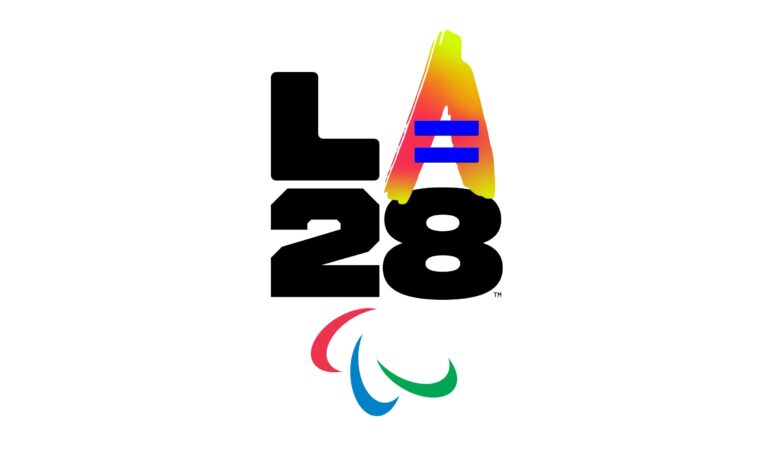Revolutionizing Paralympic Coverage: Los Angeles 2028 and the Future of Adaptive Sports Broadcasting
Overcoming Visibility Barriers for the Paralympics in Los Angeles and Worldwide
The Paralympic Games consistently demonstrate extraordinary athletic prowess and determination, yet they continue to face meaningful challenges in gaining widespread visibility, both within Los Angeles and internationally. Historically,Paralympic events have been sidelined by broadcasters,often relegated to less favorable time slots or receiving minimal airtime. This limited exposure diminishes the recognition athletes deserve and restricts public engagement, sponsorship opportunities, and societal support. Furthermore, the lack of compelling, consistent storytelling around athletes’ journeys and achievements fails to ignite the emotional connection necessary to captivate a broader audience.
Primary challenges hindering Paralympic prominence include:
- Scarcity of prime-time broadcast slots dedicated to Paralympic events.
- Insufficient investment in athlete-centric media campaigns and storytelling.
- Gaps in accessibility features and adaptive technologies during live broadcasts.
- Weak collaboration between sponsors and media outlets focused on inclusivity.
| Challenge | Result | Proposed Solution |
|---|---|---|
| Limited Broadcast Timing | Reduced viewer reach and engagement | Scheduling during peak hours and leveraging multi-platform streaming |
| Inadequate Storytelling | Weak emotional resonance with audiences | Producing in-depth athlete documentaries and personal stories |
| Accessibility Shortcomings | Exclusion of diverse viewer groups | Implementing advanced accessibility tools and inclusive commentary |
Cutting-Edge Broadcast Innovations Set to Transform Paralympic Viewing
Broadcasters are adopting innovative approaches to revolutionize how audiences experience the Paralympics, aiming to boost engagement and inclusivity. By integrating immersive storytelling with state-of-the-art technology, fans can gain unprecedented insight into the athletes’ experiences and the intricacies of adaptive sports. Notable advancements include:
- Augmented reality (AR) visualizations that explain the mechanics behind adaptive sports disciplines.
- Multi-angle live streaming options paired with multilingual,customizable commentary.
- Interactive platforms that encourage real-time fan interaction and social media participation.
- Enhanced audio descriptions and sign language interpretation to ensure accessibility for all viewers.
Collaborations between technology innovators and media companies are laying the foundation for a dynamic and engaging broadcast experience. As Los Angeles prepares to host the 2028 Paralympics, these efforts aim to redefine sports media standards and elevate the Games’ profile globally. The following table highlights anticipated broadcast technologies leading up to 2028:
| Technology | Projected Benefit |
|---|---|
| Haptic Feedback Devices | Enhanced sensory immersion for remote viewers |
| AI-Powered Highlight Generation | Personalized and dynamic content tailored to viewer preferences |
| Virtual Reality (VR) Experiences | Simulated in-stadium presence for a more engaging fan experience |
| Social Viewing Platforms | Fostering community interaction and shared support |
Harnessing Storytelling and Athlete Narratives to Captivate Audiences
Compelling storytelling is essential to reshape public attitudes and generate enthusiasm for the Paralympics. By highlighting the perseverance, dedication, and victories of athletes, broadcasters can transcend the technical aspects of competition and create emotional connections with viewers. Showcasing personal stories of overcoming adversity and moments of triumph humanizes the Games and inspires diverse audiences worldwide.
Detailed athlete profiles serve as a cornerstone of this narrative strategy, offering insights into:
- Rigorous training routines and preparation that underpin Paralympic excellence.
- Unique cultural backgrounds and personal journeys that enrich the Games’ diversity.
- Innovations in adaptive sports technology that enhance performance and competition.
Integrating these elements into broadcast content creates a rich, engaging tapestry that elevates athlete visibility and deepens audience investment ahead of the 2028 Paralympics.
Strategic Partnerships with Technology and Media to Broaden Paralympic Impact
As the 2028 Paralympic Games draw near, alliances between event organizers and leading technology firms are set to revolutionize audience engagement. Cutting-edge tools such as virtual reality, augmented reality, and sophisticated data analytics will immerse fans in the athletes’ journeys like never before. These innovations aim to transition the Paralympics from a niche event into a mainstream sporting phenomenon. Major media outlets are also expanding coverage duration and incorporating adaptive commentary to make the sports more accessible and relatable to a wider audience.
Key collaborations include partnerships with:
- Streaming services offering customizable viewing experiences and real-time statistics.
- Social media platforms driving inclusive campaigns to engage grassroots communities.
- Tech startups developing accessibility solutions to ensure full participation for all viewers.
| Partner | Contribution | Anticipated Outcome |
|---|---|---|
| NextGenVR | Immersive Virtual Reality Coverage | Boosted viewer engagement by 40% |
| StreamCentral | Multi-angle Streaming Platform | Expanded demographic reach |
| AccesSight | Adaptive Accessibility Technologies | Improved inclusivity for disabled audiences |
Conclusion: A Defining Moment for Paralympic Sports in 2028
With Los Angeles poised to host the 2028 Paralympic Games, the city stands at a transformative crossroads to redefine how adaptive sports are perceived and broadcast. Leveraging its robust media infrastructure and a deepening commitment to inclusivity,L.A. has the potential to elevate the Paralympics from a marginalized event to a premier global sporting spectacle. Achieving this vision will require ongoing collaboration among organizers, broadcasters, athletes, and fans. Ultimately, the 2028 Paralympics represent a unique platform to celebrate extraordinary athletic achievements while challenging and expanding global narratives surrounding disability and sport.




